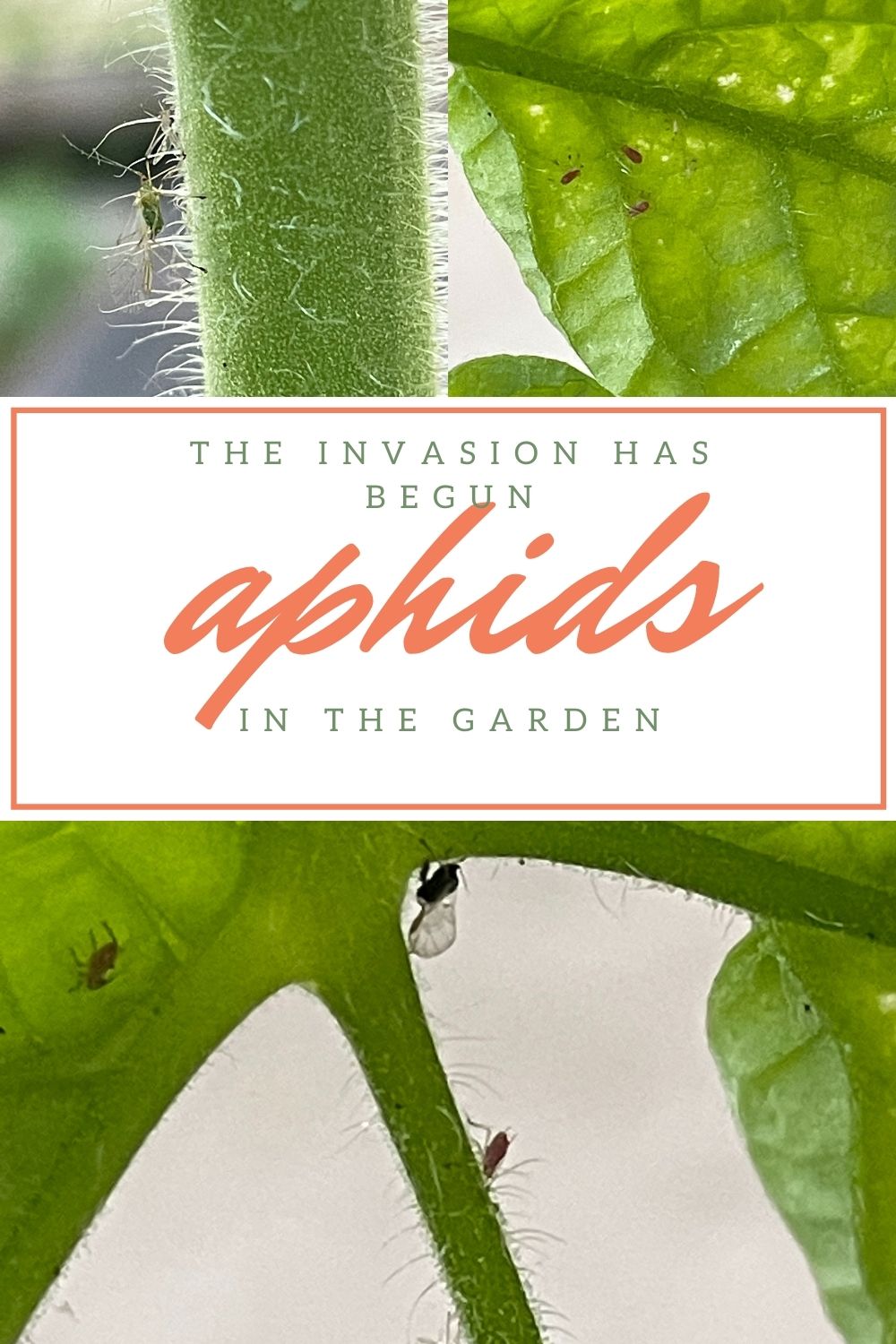
The Invasion Has Begun~ Battling Aphids In The Garden
Those tiny, little, sap sucking, plant destroying bugs that you find lining your plant stems and leaves are most likely aphids in the garden.
Aphids come in a variety of colors white, yellow, black, brown, green, or red. Some are winged and some are not, but one thing that you could guarantee is that there will NEVER be JUST ONE.
They multiply VERY quickly, so as soon as you first see aphids in the garden, it’s best to begin your battle immediately. IMMEDIATELY! (Did I stress that timing enough?) While they won’t kill your plants overnight, a few on a stem one day could turn into hundreds coating the stem the next day.
*Disclaimer~ This post contains affiliate links for Tractor Supply and Amazon. As an Affiliate, I earn on qualifying purchases at no additional cost to the buyer.
Why Are Aphids Bad?
Known as “garden lice”, aphids don’t chew up leaves but instead suck the sugar from the plant. This not only weakens the plant, making it susceptible to disease, but ultimately will make the plant shrivel up and die if not managed right away.
How To Get Rid Of Aphids In The Garden
There are multiple ways of getting rid of aphids on plants, and usually gardeners don’t rely on only just one. It’s important to know, however, that there isn’t a quick fix or even a total fix for the season. Managing aphids will be season long and each method has its pros and cons to consider. We use a combination of these 4 ways- Smoosh ‘em, Trap ‘em, Spray ‘em, Annihilate ‘em.
A few weeks ago our plants were COVERED, however as of right now I had a difficult time finding any in order to get pictures for this post. YAY! We are winning!
Smoosh ‘em
Luckily the sight and size of aphids aren’t scary or gross at all, so wiping them off of plants with your finger tends to be no big deal. It sounds horribly cruel but their fragile bodies won’t stand a chance to your thumb.
On the other hand, it will get to a point where doing this is like wiping a few specks of sand off your hands, after just rolling around wet bodied on the beach. It’s not going to make a huge dent in the problem.
Trap ‘em
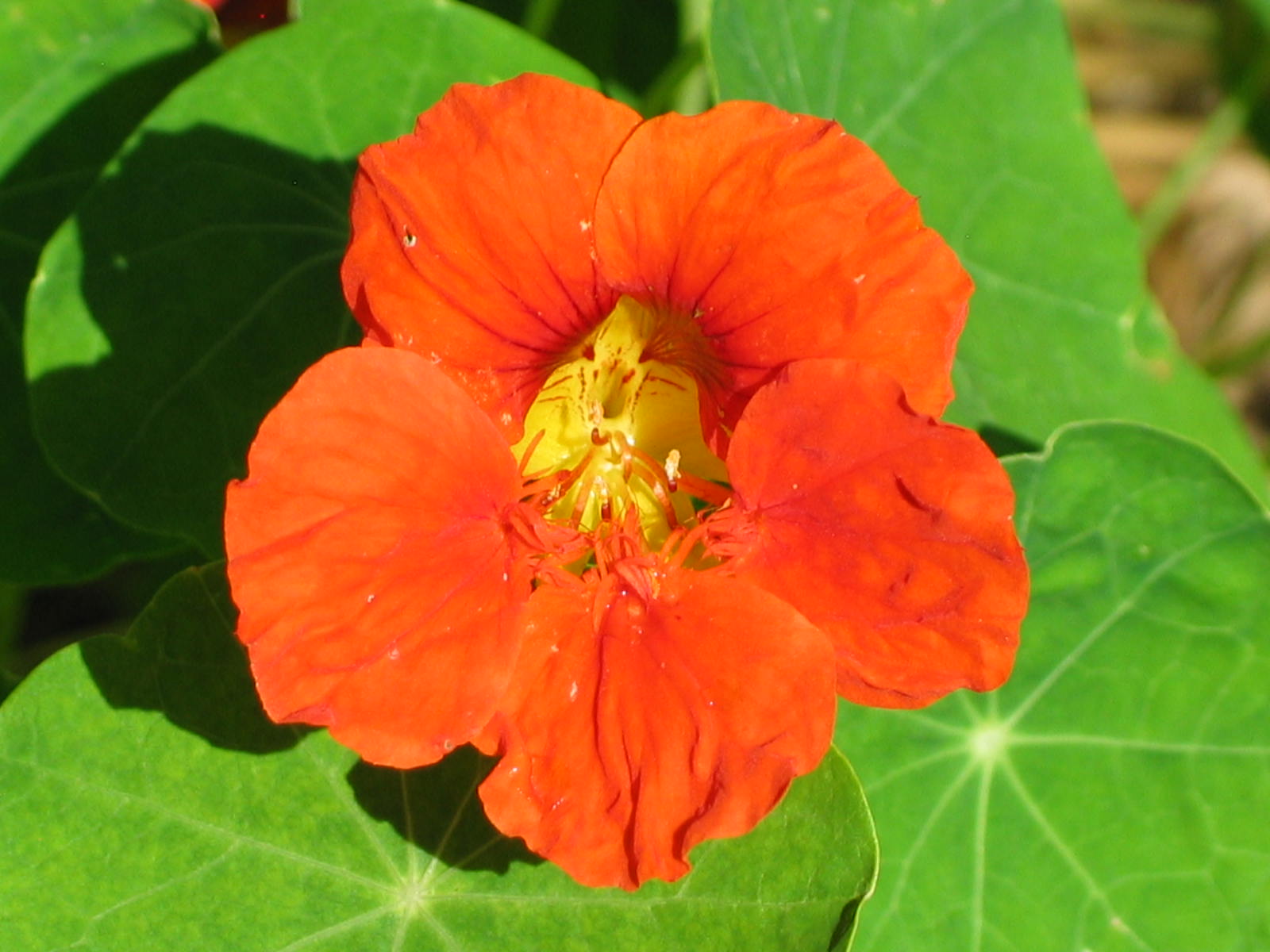
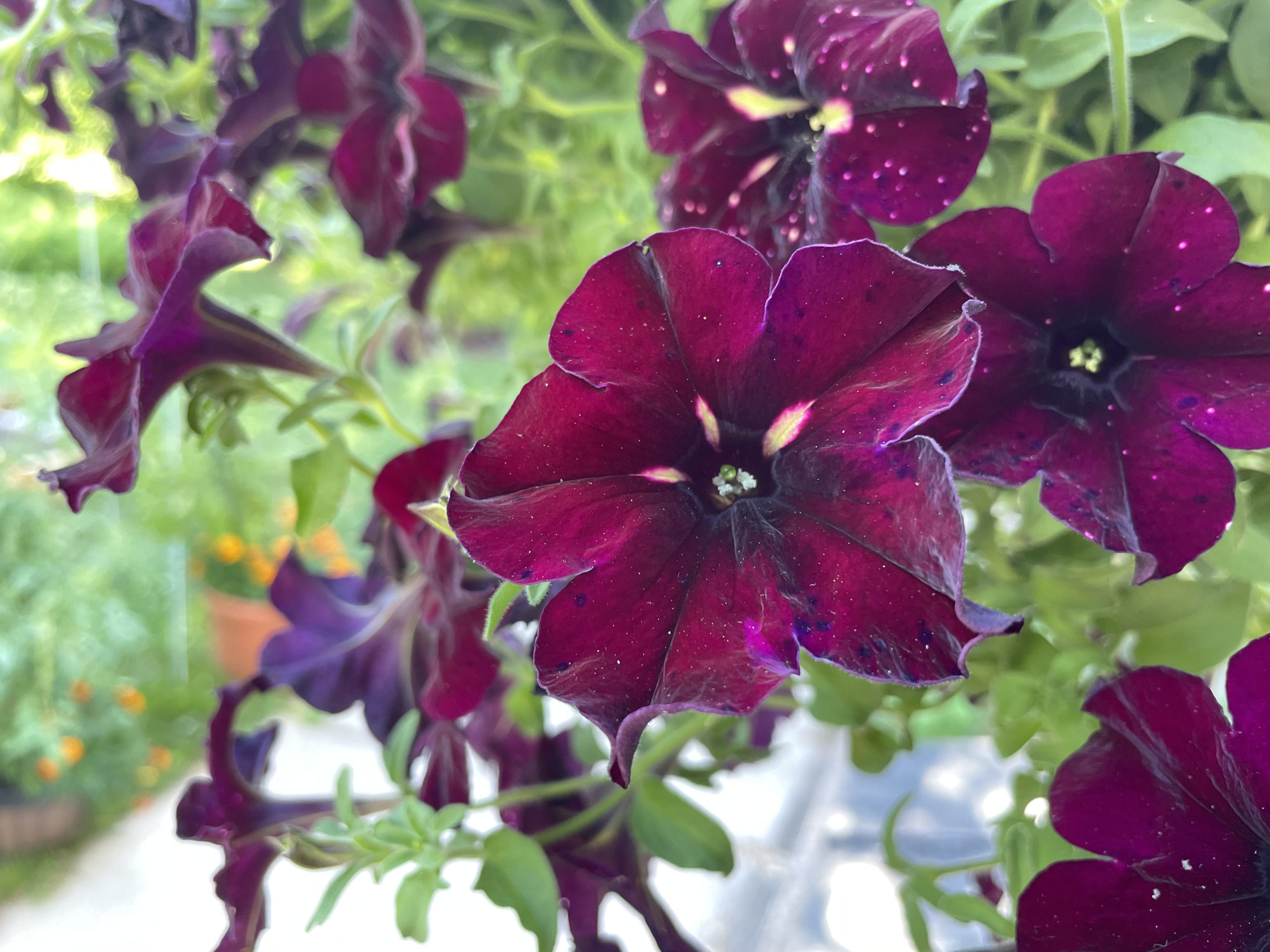
Have you ever heard of “Trap Crops”? These are crops, usually flowers, that are planted intentionally to lure harmful bugs to them and away from your other more precious plants.
Nasturtiums, Petunias, and Nettles are all very good trap crops for aphids.
Stick them in garden beds or hanging baskets, and they will be more appealing to the masses of aphids than your veggies. You’ll still have them on your vegetable plants, however it won’t be nearly as bad as if you didn’t have the trap crops at all.
Spray ‘em
There are a variety of sprays on the market to help control aphids in the garden, just be sure that whatever you choose says that it is safe for vegetable plants.
Spray stems as well as the tops AND bottoms of each leaf. If you flip a leaf over, you may get surprised at all of the different life cycle stages of the aphid that you’ll find.
Pyrethrin as well as Neem Oil are very popular aphid sprays that you’ll hear a lot about in gardening circles.
Be aware that some are already diluted in spray bottles ready to use, and others are concentrated needing you to dilute it first and aren’t just straight refills, so be sure to read the instructions. Concentrates will be most cost effective.
Also, timing of when to spray for aphids is important. If you spray early in the day, you will run the risk of wet leaves burning when the sun hits them. Also, you’ll want to spray after bees have already been through because some sprays are toxic to them (Pyrethin is toxic to them while Neem Oil they say is not). If using a spray, we spray later in the day, after the direct sun has passed and bees already came and went.
And so here is your Con to sprays- Some sprays kill beneficial insects as well as the harmful ones. It’s all about knowing the risk, weighing your odds, and trying to prevent too much collateral damage.
Neem Oil is said to be safe for beneficial insects as it is only really toxic to leaf eating/sucking bugs. However, in my opinion, while it DOES work it tends not to be quite as strong/effective as other sprays that you might choose if you are seriously being overrun.
*Tip-Depending on how many plants you have, you may want to pick up an actual Garden Sprayer as squeezing the trigger of a regular spray bottle gets old (and painful to the hand!) after a while when you have a lot of plants to care for.
How to make homemade aphid spray
You could also make your own! I feel like the DIY Aphid Sprays aren’t quite as strong as store bought, however they are definitely a great start and easy to mix up in a pinch. For all of the below, be sure to shake the bottle periodically when spraying to keep everything mixed up well and not settling.
Quick & Easy Soap Spray
3 Tablespoons Liquid Dish Soap (NOT an antibacterial one)
1 Pint Water
Mix until soap is dissolved and pour into a spray bottle.
Natural Vinegar Spray
1 Tablespoon White Vinegar
1 Tablespoon Unscented Liquid Castile Soap (Dr Bronners is a good brand)
1 Gallon Water
Mix well and pour into spray bottle.
DIY Neem Oil Spray
4 tsp. 100% Cold Pressed Neem Oil
1 tsp. Liquid Dish Soap (NOT anti-bacterial type) or Unscented Liquid Castile Soap
1 Gallon Water
Mix well and pour into spray bottle.
Annihilate ‘Em – Build Your Army
There comes a point when you just may want to call in the Calvary. No one wants to have to spray all the time, and we all tend to strive to a more organic way of gardening. Bringing in Beneficial Bugs for combat is one of my favorite methods in the war on aphids in the garden.
I sound extreme, I know. There are days that I walk out into the garden picturing myself like a camouflaged Rambo, while the music from Rocky plays in my head. Don’t ask me why I channel Sylvester Stallone while gardening, it’s just the way my brain works!
I’m a Mama Bear not only when it comes to my children but also my plants.
~Enter Ladybugs, Lacewings, and Praying Mantids~
Did you know that you could actually purchase Beneficial Bugs for the garden??
Timing of purchasing them is important. You don’t want to buy them too soon when there isn’t enough bad bugs yet to feed on. They will migrate away especially if the neighbor’s yard looks more appealing. Also too soon could mean too cold so wait until you have temps no less than 65.
Keep an eye on the weather forecast as well. Try your best to time their arrival not to be during a week of all rain. Some come as eggs and you don’t want them to wash away from the intended plants that you need them to fight for.
Ladybugs- First, it’s important to know what these look like in their larva and different life stages, so that you don’t kill them on accident. You may already have a bunch of them in your garden and not even realize it. Or may mistake them for harmful bugs when they are actually your ally.
I have seen ladybug larva for sale at local garden stores, as well as online (see above link). We have purchased both ways in the past with great success.
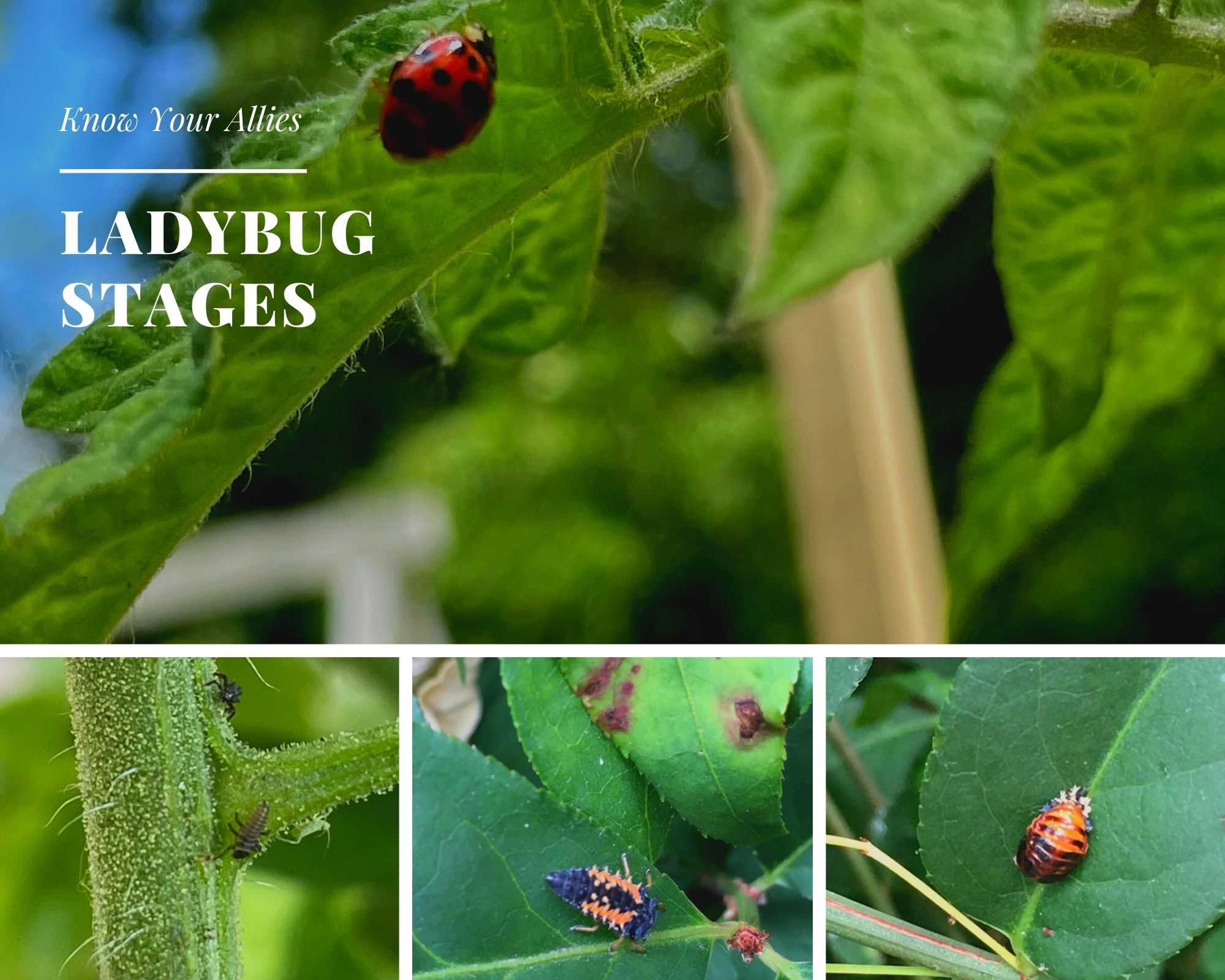
Lacewings- These delicate warriors could be purchased as eggs or as adults. We always have gotten as eggs. These usually come by the 1,000s mixed in with sawdust or rice hulls and depending on where you decide to purchase them from, you may choose weekly deliveries for a number of weeks set by you.
In the evening, mist your plants and sprinkle the sawdust/egg mixture over top. The water just helps the mixture to stick to the leaves and not blow away.
The eggs are pretty much invisible in the sawdust so I always am skeptical if they were even in there or if they successfully hatched. But if you keep a close eye out and know what to look for, you will soon see tiny brown larva on your plants that look similar to short caterpillars. This is them!! And they are already eating aphids for you and getting bigger each day!
Once they become adults however, it tends to be a bit trickier to decipher them FROM aphids as they look a lot alike.
Adult Lacewings are green and though they are similar to aphids, they have longer bodies and longer wings. Aphids’ wings curve up and lacewings’ wings curve down. Know what you are looking for so that you don’t kill them by mistake.
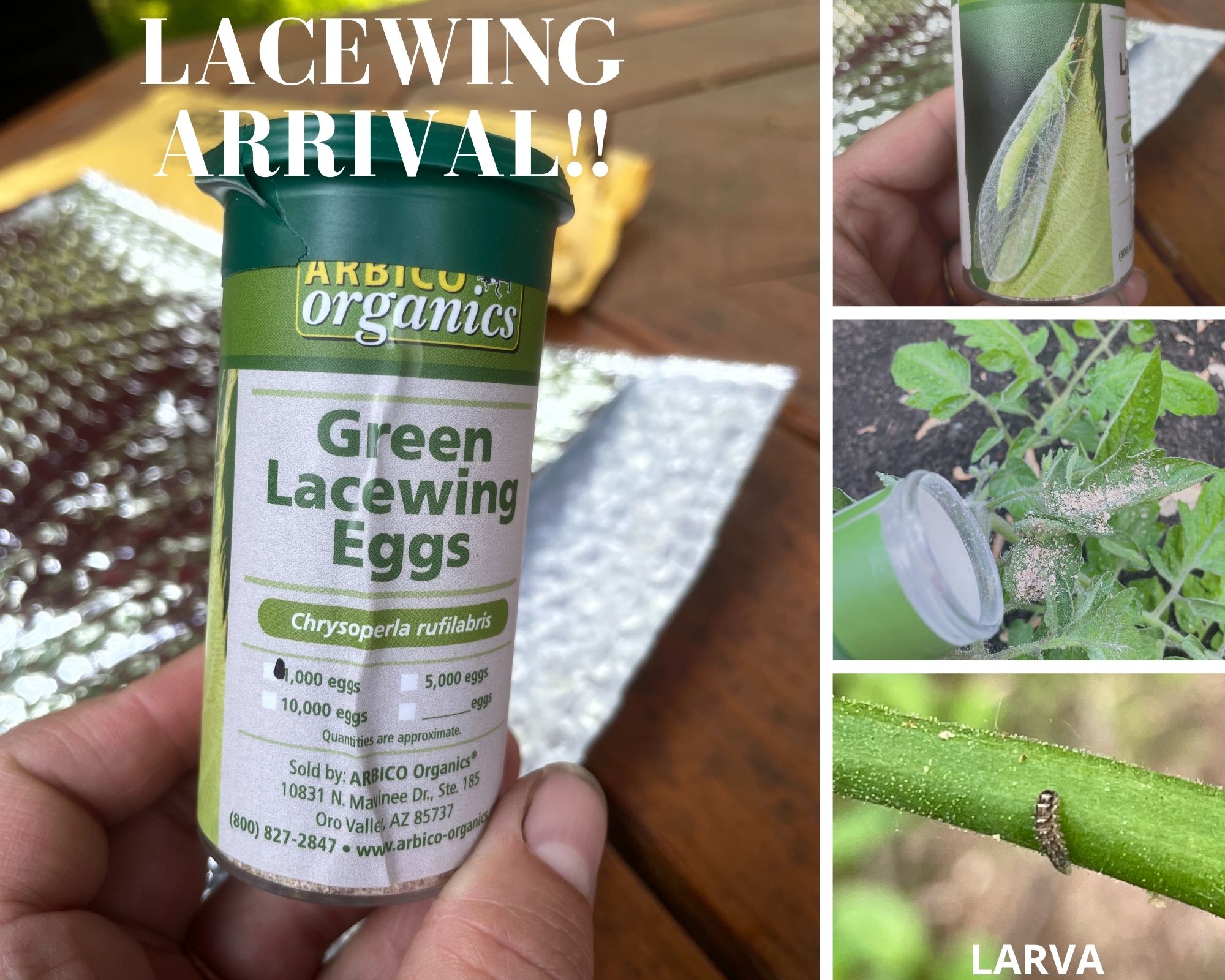
Praying Mantids- Ok this is a first for us this year. I have a very strong, totally irrational fear of Praying Mantids. It has to stem from something that as a child I must have seen on TV or a picture of. I picture them massively huge stabbing me in the temple with their crazy spear hand. As an adult I KNOW this is nonsense however I still cringe at the thought.
Even with fear, I’m not messing around with my garden. This year we have been battling Aphids, Cucumber Beetles, Cabbage Loopers, and now Stink Bugs so I need all the troops that I could get!
They can be purchased as Egg Sacs which hold 100-200 eggs in each one. The one that I purchased, comes in a plastic cup with air holes. As soon as they hatch, they come out starving so they need to be released right away or they will eat each other!
I picked these up at our local Agway garden store but I’m sure with a bit of digging they could be found online. The only ones that I could find doing a quick search were fancy $68 ones however mine were only $14, so forgive me for not putting that link but I don’t want you to get ripped off.
Important To Note ~ They will eat pretty much all bug types (yay for tick control as well!!) ….. including your ladybugs and lacewings. So use caution on timing of when you purchase. If you plan on getting more than one type of bug, you may want to do it as phases throughout the season.
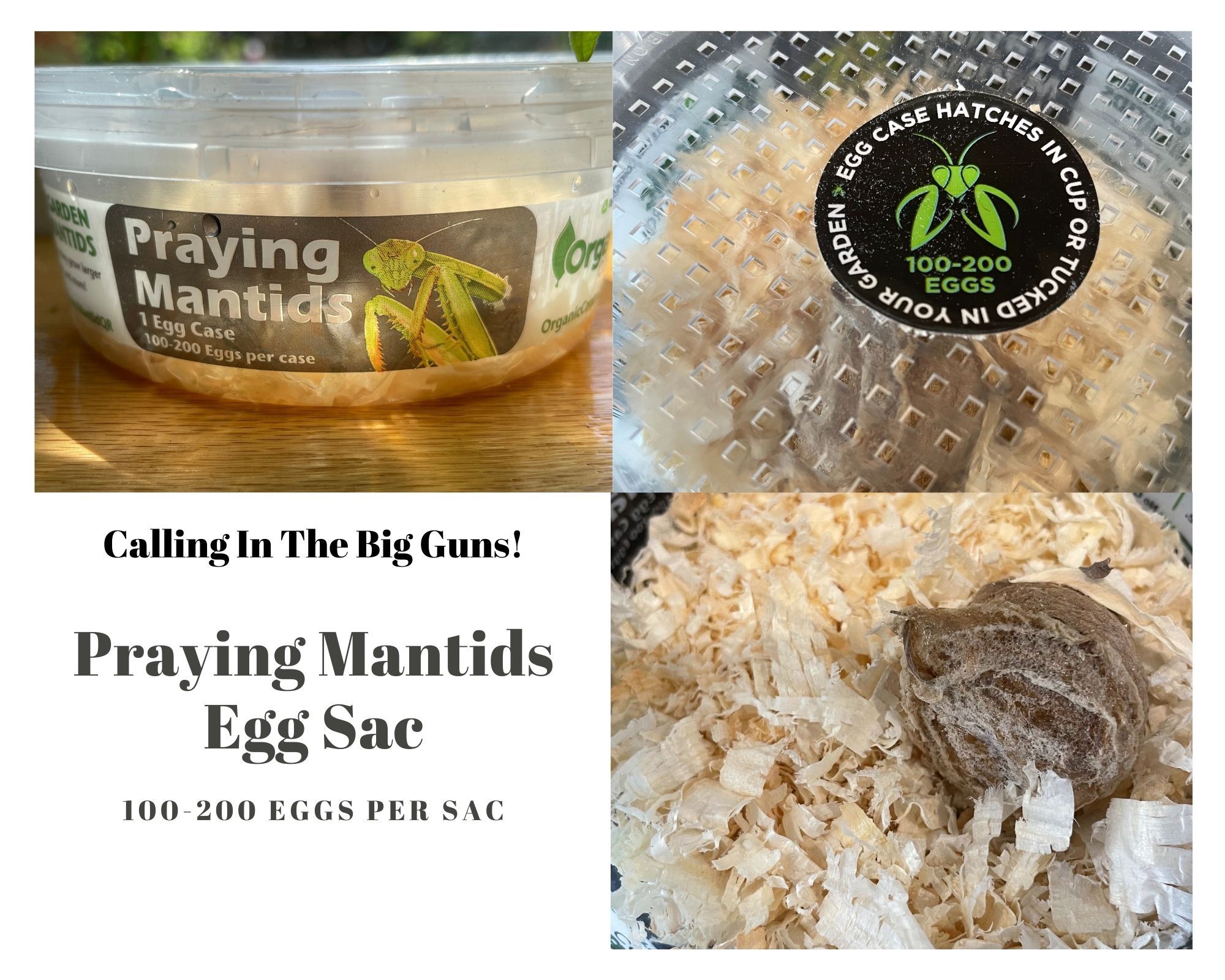
IF YOU GET BENEFICIAL INSECTS FOR THE GARDEN BE CAREFUL WHAT YOU ARE SPRAYING ON YOUR PLANTS!
We spray earlier in the season, but once we release our army of bugs, we back off the spraying to avoid killing the good guys. Keep that in mind as you fight aphids in the garden or any other type of bug, or disease.
Ok! You are equipped with knowledge and tools…now put that warrior face paint on and take back what is rightfully yours!!
Be sure to subscribe to our newsletter below to stay in touch!
Happy Aphid Fighting!

 About Me
About Me
0 Comments